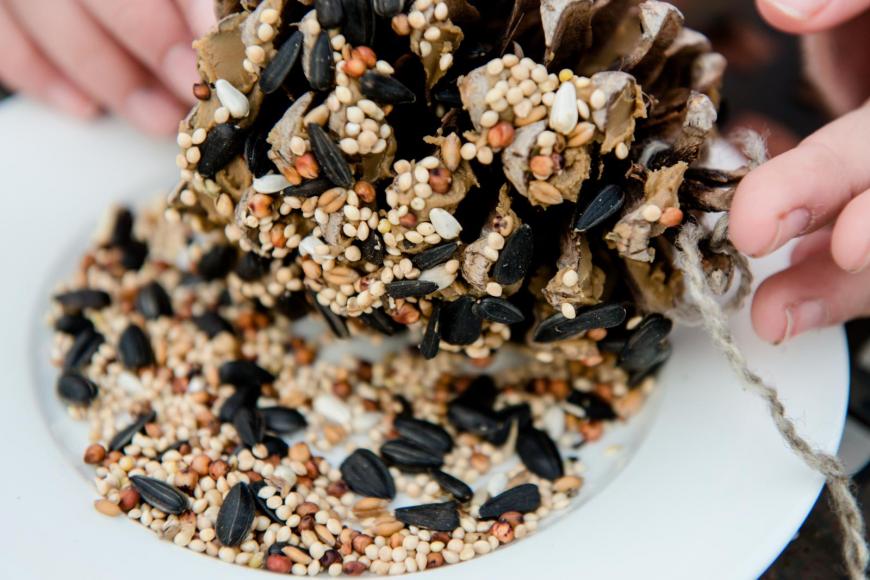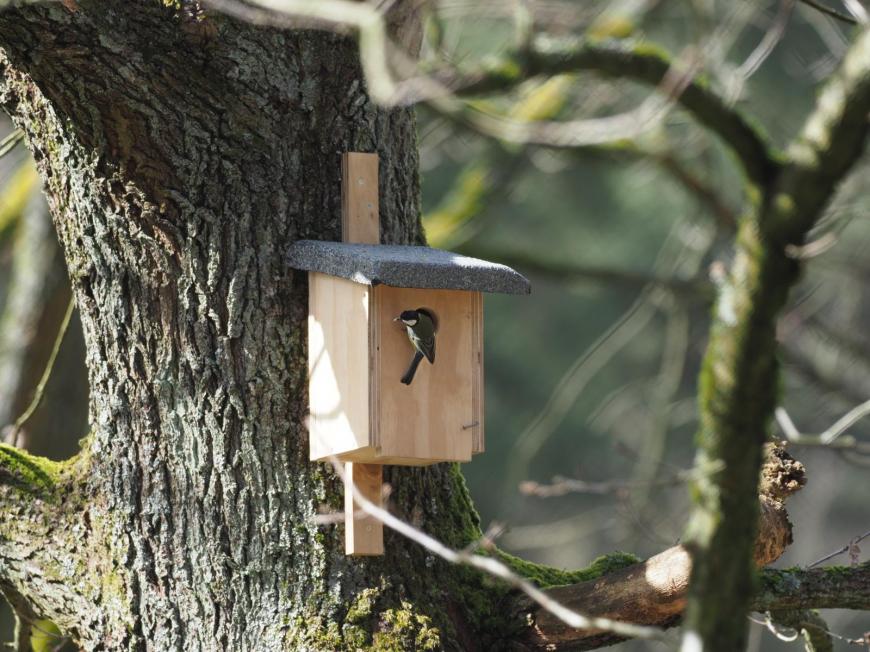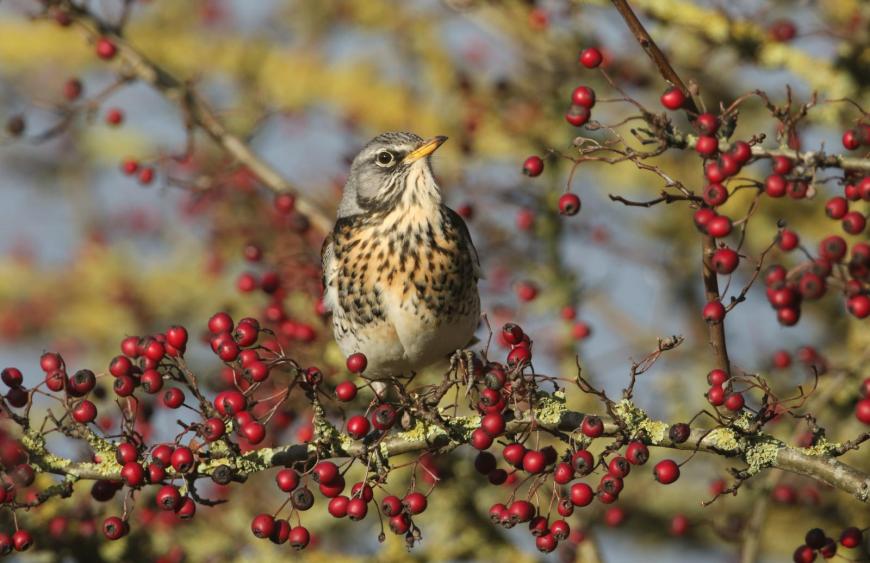
We all know that getting fresh air and exercise is important for everyone regardless of age and with so many children at home during lockdown we thought we’d gather some ideas for getting kids outside and connected to nature. Taking inspiration from the RSPB’s Big Garden Birdwatch this weekend, we’re going to keep this article bird-themed and suggest some family-friendly activities to help keep the kids entertained and look after our feathered friends at the same time! Some of the activities including the homemade bird feeders can be done indoors on those cold, rainy days or in between trips outside. Have fun!
The RSPB’s Big Garden Birdwatch runs 29th-31st of January and is a brilliant opportunity to get kids involved with an important nation-wide wildlife survey as well as a great way to inspire children (and adults!) of all ages to learn more about our feathered friends. Everything you need to take part including a guide and bird i.d. sheet can be downloaded from the RSPB website and you can also submit your results online. It’s a great way to spend a screen-free hour together as well as practice your bird identifying skills! You might even be surprised by the number of visitors to your garden. It’s amazing what we can observe when we take the time to stop and pay attention and dedicating a quiet hour to birdwatching certainly helps us to do this.
Taking part is straightforward. You just need to choose an hour when you're going to birdwatch, count the number of birds you see in your garden and then submit your results. (To avoid double-counting the same bird, you record the highest number of a species of bird that you see at any one time. So if you only see 1 blackbird at any one time, this is recorded as a total of 1 blackbird on your sheet. If you see 2 blackbirds together, then your total is 2 and so on). I recommend setting up a cosy, comfortable spot with cushions and blankets, next to a window with a good view of the garden. An hour is quite a long time to focus so preparing some snacks and drinks in advance is key! Some paper and colouring pencils can help to keep the youngest birdwatchers entertained and if you have bird books and binoculars get these out ready to help with identification.
If you’re inspired by the Big Garden Birdwatch and want to attract more birds into your garden, making your own bird feeders is a fun, crafty activity for all the family. There are hundreds of different recipes and ideas online, including on the Woodland Trust’s ‘Tree Tools for Schools’ website. Experiment and see what types of bird the different feeders attract and remember to leave out some fresh drinking water too. Here are our tried and tested family favourites:
Pinecone bird feeder: This is super simple. All you need is a pinecone, some peanut butter, some wild birdseed and some string for hanging. First, tie some string in a loop onto the top of your pinecone for hanging. Then, plaster peanut butter all over the pinecone (an old lollypop stick works brilliantly for this). Finally, dip or roll the pinecone in some birdseed and it’s ready to hang outside. If you don’t have any pinecones, you can also do this with the cardboard inners from toilet rolls and if you can’t use peanut butter due to allergies a nut butter such as almond or cashew should work fine.

Filled orange halves: This is another fun feeder to make with children (younger children will need some assistance from an adult). For this one, you need an orange, some coconut oil, some birdseed and some string for hanging. First off, cut the orange in half and scoop out the inside. (You can eat or juice the halves). Then, you need to make four holes at the top of each scooped out half ready for the hanging string. Next, mix the seed and the coconut oil together. 1 part oil to 2 parts seed works great. If the coconut oil is solid, you’ll need to melt it slightly so that you can mix the seeds into it more easily. Once the oil and seeds are mixed together, fill the orange halves with the mixture and pop them into the fridge or freezer to set. Once the oil has solidified, attach the hanging string and hang up outside.
Home-made popcorn strings: This might be our favourite. The popcorn-making and eating bit goes down a treat! Make a big bowl of popcorn on the stove or in a popcorn machine (don’t use microwave popcorn as the added ingredients aren’t good for the birds). Once the popcorn is cool, string them onto a piece of thread - large embroidery needles work best for little hands. You can also add dried fruit and berries and create patterns as you go along (we made ours at Christmas time and used cranberries for a festive look!) Once you’ve made a nice long string, tie a knot at the end before heading outside and draping it around a tree or tall garden structure. Another similar idea is to use thin garden/floral wire and thread on a mixture of left-over kitchen scraps (bread, cheese, apple) before bending it into a loop and hanging it up as a treat for the birds.
Whilst it’s best to put up new bird boxes in the autumn (so that the birds have plenty of time to scope them out before spring,) it’s still worth having a go at putting some up now. Blue tits, coal tits and great tits don’t seriously investigate new nesting sites until February/March so you can try putting a box up for them now. Remember, that it’s the size of the entrance hole that determines which birds will be interested in using the box as a nesting site, so buy or make one with the right sized entrance for the birds you hope to attract. The RSPB has a helpful page all about making and placing a nestbox.

Wrap up in warm layers, take a flask of hot chocolate, some snacks, a bird guide and binoculars if you have a pair and head out for a local nature walk. If you have a local woodland this is a great place to go and spot some different types of bird to the ones you may see in your garden. See if you can spot some birds feasting on winter berries. Budding ornithologists might like to take a nature journal or sketchbook to draw pictures and take some notes about the birds they see. You can also give your kids a camera to practice some wildlife photography. Another way to liven up a family walk is to do a scavenger hunt and challenge the kids to find a list of seasonal items. A winter scavenger hunt list might include evergreen leaves, moss, a lacy leaf skeleton and fallen pine cones. If it’s snowy, see if you can spot and identify different animal tracks in the snow. You can also do a scavenger hunt in your garden and for the younger ones you can keep it nice and simple by asking them to find different colours or textures like smooth stones, rough bark and spongy moss. Scavenger hunts are a fun, ‘no prep needed’ activity for when you just need to pull on some wellies and head out for some fresh air (we’ve all been there!).
Even a small garden can provide a variety of different natural food sources for the birds. Plants that can supply berries and seeds over the winter months are especially important as this is the time of year when foods can be scarce. With a bit of planning, you can provide a year-round succession of valuable foods. This might be a great project for older children who are interested in wildlife-friendly gardening and who can help to research different plants for the garden. There’s still some time left to plant bare-rooted trees and shrubs. Depending on where you are in the UK, you have until around mid-February to early March to get bare-rooted trees and shrubs into the ground before growth starts in the spring. Here are a few ideas to get you started.
Hawthorn, holly and rowan are all fantastic trees to have in the garden for birds. The berries on holly and hawthorn often last right through the winter, providing an important food source for several bird species including blackbirds, fieldfares and redwings.

Cotoneaster (Cotoneaster amoenus) is one of the best shrubs to plant for the birds. With its abundance of bright red berries, it’s a favourite with garden birds including blackbirds, thrushes and waxwings. Guelder rose (Viburnum opulus) is another great choice. It’s a native plant and its glossy red berries provide winter nutrition for a range of birds.
Honeysuckle and ivy are climbers of choice for the wildlife garden. Both plants benefit birds as well as a host of other wildlife. In the autumn, ivy flowers attract insects which provide food for robins and wrens and when the dark berries appear during the winter they provide a feast for many different species including blackbirds, pigeons, starlings, thrushes and waxwings. For a more compact climber, suitable for smaller gardens, honeysuckle is a great choice. Its perfumed flowers attract plenty of insects over the summer months and it provides berries and shelter for birds later in the year.
Sunflowers are one of our family favourites. They’re great fun to grow with kids and the huge number of seeds they produce are relished by a variety of birds including finches and long-tailed tits. They’re an attractive nectar-plant for pollinators too. If I had to choose just one other flowering plant for birds it might be teasels (Dipsacus fullonum). With their striking seed heads that last most of the winter, they are a beautiful architectural plant to have in the garden and their seeds attract buntings, goldfinches and sparrows.
Loading recent activity...